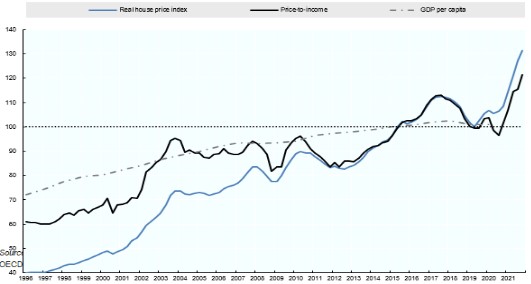How far should religious toleration be extended in a religiously diverse society such as Australia?
I will begin with my thesis statement: Religious beliefs and practices should be the ‘private’ right of all individuals, as long as they do not infringe on the rights of other individuals within our society; or break the laws of that nation.
This declaration is born out of my secular humanism, which means that it is derived from a human centric value system.[1] I stress the word ’private’ in this statement because I consider religious beliefs and practices to be an essentially private matter, and not appropriate for the public sphere. Defining ‘private matter’, in this instance, as an individual’s beliefs, within himself or herself. The ‘public sphere’, conversely, is the outer realm of society, where we do business with one another, and which is governed by the laws of the land; in a secular country like Australia.[2] We do not seek to control, or legally monitor, an individual’s thoughts and beliefs in this country. Secularism is here defined, as the separation of Church and State, usually concerning the separation of powers between the majority religion and the national government.[3] Religions, in Australia, have influence over private belief systems, but no longer have any direct involvement in the act of governing. Australia is a signatory to the UN International Covenant on Civil and Political Rights.[4]
Religious Toleration in Australia
Religious belief is understood, in this essay, to be the belief in the existence of a supernatural entity, or entities, responsible for the creation of our universe. Religious practices are the direct result of this belief, and are often pursued in the further belief, that this transcendent entity is overtly concerned with the dress, behaviours, eating and sexual habits of human beings.[5] It is often these religiously inspired behaviours which do impinge upon the rights of others within our society. Examples of these, given here, come from both the majority white Anglo-Saxon culture, and from cultures who have migrated to Australia, more recently, and who have become part of the rich multicultural mix. It is very difficult to separate religious and cultural values, and, therefore, difficult to argue this question on purely religious grounds; rituals and customs having evolved out of a shared space.
This is an important point, and the claims by adherents of some of these customs, that certain practices are religiously inspired, is sometimes used to give abhorrent practices immunity from prosecution. As an example of this, in Australia, we do not allow clitoridectomies to be performed, despite the cultural preferences of certain African and Middle Eastern, Islamic peoples. Our government, and public opinion, does not tolerate the surgical removal of the clitoris of females, unless for justifiable medical reasons; otherwise it is considered to be a barbaric transgression of human rights.[6]
What is meant here by ‘toleration’? Rainer Forst, in his article, “The Limits of Toleration”, describes tolerance as a “normatively dependent concept”, by which he means that its context must be analysed in each circumstance where the term is applied.[7] Whether it is a majority or minority view, what is the relationship between the tolerators and the tolerated, and, importantly, that what is tolerated is objected to. Forst goes on to emphasise that the “limits of toleration” must be specified, and in relating this to the example given above, I would posit that if these Islamically inspired proponents of clitoridectomies, merely, wanted to pierce the outer labia of their girl children’s genitals, it is likely that Australian governments would allow them to. It is in the removal of a sensory organ responsible for orgasmic sexual pleasure, where Australians reach their limit of toleration for this religious and cultural practice.
We do, however, continue to practice circumcision of the penis, performed on baby boys for the majority of the population, and this too has its origins in religious belief; Christian-Judaic in most cases. Circumcision is widely practised by a range of cultures around the globe, being a tribal rite of passage for many indigenous cultures; and its sacred importance to the three monotheistic religions: Judaism, Christianity and Islam have seen it become the’ norm’ for an estimated one third of the world’s male population.[8] Health experts continue to justify it on hygienic grounds, but there is now a growing minority within our community who see circumcision as an unnecessary and barbaric practice.[9] This, in my view, is an example of our collective ignorance in regard to the ongoing influence of religious traditions within our society. In both these instances, I see the rights of individuals infringed upon by religious practices existing within cultural traditions.
A far more visible example of individual rights being impinged upon in a number of progressive western societies, like Australia, the US and in Western Europe, is the prescribed wearing of the hijab, niqab and burka for females from certain Islamist countries of origin. To citizens of societies who have striven for greater gender equity, through the women’s liberation movements of the last few decades, and historically, for much longer, it is deeply unsettling to see women, apparently, forced by religious protocols to cover their, hair, and/or faces and/or entire bodies.[10] These restrictive attires are seen by some, as uniforms of oppression of women’s rights and freedoms. Many of these women wearing the hijab would argue that they choose to wear these traditionally visually suppressive garbs and request non-Muslims to withdraw their condemnation.
All of the above examples, involve, generally, the intimate family members of religious believers: wives, children etc. Is this, merely, a private matter, and should these practices, therefore, be freely tolerated within Australia? I think not. Wives and children, within these religious and cultural traditions, are vulnerable individuals and deserving of the protection of our secular governments. Religions often preserve archaic hierarchical structures, along with a host of other outdated behaviours and beliefs. The role of women in many Islamic societies is a keen example of this. Islamic law allows polygamy, the Koran, like the Old Testament Bible, generally views women as inferior beings; and Islamic culture often focuses on women, as sexual and procreative vessels for men.[11] Belief in the literality of ancient texts like the Koran, and the Christian Bible, are powerful hindrances for the evolvement of cultural attitudes toward women, and toward divergent behaviours like homosexuality.[12] Women and children are considered to be the chattels of patriarchal family leaders; they do not have the rights of emancipated western women. Should we as a society tolerate the exploitation and denial of human rights in these instances? Are they not Australians first, or are they Muslims primarily, with an a priori right to have their human rights transgressed on religious and cultural grounds?
Questions such as these go to the heart of the argument about religious toleration in Australia. If Australian law was to ban the wearing of head scarves and veils on the grounds of women’s rights, opponents of greater uniformity among citizen’s rights, and more proactive protection of human rights for all individuals, would see religious freedoms being trampled upon. Social policies of integration, rather than assimilation, have been favoured during the last few decades, and social cohesion is seen, now, to be based on the acceptance of diversity, rather than on an adherence to a cultural identity defined by the ruling majority. This shift has, in my opinion, enriched Australia on many fronts: the foods we eat, the fashions we wear, the books we read, and our very conception of what is beautiful, has expanded exponentially.
Forst offers ‘reciprocity’ as one of the key ingredients in his “respect conception” of tolerance. By this, he means that one group does not make any claims to rights denied to the other group, and that they do not project their own reasons onto the other’s argument.[13] This would see the rights of Muslim women to wear the hijab affirmed, and the argument, that it is a symbol of oppression against women, rejected as an example of projecting western reasons onto the position of the Muslim women who choose to wear it. Tolerance, in Forst’s view, is not something that the dominant culture gives by dint of permission to minority subcultural behaviours; rather it needs to be built around moral respect between equal partners, who agree to disagree. Moral pluralism best describes his position on true toleration. Martha Nussbaum gives numerous instances in her book, The New Religious Intolerance, where this has not been the governing principle in regard to religious tolerance in the US.[14] She regularly invokes the spirit of John Locke, the seventeenth century British philosopher, famous for his religious toleration, when calling on American courts and legislators to overcome fear in the face of religious diversity.
To conclude, tolerance means we do not agree with the practices of certain cultures, within our communities, but unless they are hurting others or breaking the law, we must respectfully allow them to continue. As mentioned, the demarcation between religious and cultural, beliefs and practices is, almost, impossible to define. The word of God is often put into the mouths of men to bolster their own cultural prejudices. Religious diversity must be respected on secular humanistic grounds, and even when it appears to hinder the pace of human progress, careful examination of the issues is required. There are no easy answers when families and the rights of their individual constituents are to be considered within religiously intrusive communities. I continue to hope that religions of all flavours will continue to lose influence and adherents in the face of an enriched secular humanism. We are human beings with human prejudices; let’s stop hiding behind imagined divinities.
©Robert Hamilton
BIBLIOGRAPHY
http://www.ag.gov.au/publications/documents/reviewofaustraliasfemalegenitalmutilationlegalframework/review%20of%20australias%20female%20genital%20mutilation%20legal%20framework.pdf Achieving a Just and Secure Society, Canberra, Attorney- General’s Dept, Aust Gov, 2013.
Barker, Dan, Life Driven Purpose, Durham, Pitchstone Publishing, 2015.
Beyssade, Jean- Marie, The Idea of God and the proofs of his existence, (ed) John Cottingham, The Cambridge Companion to Descartes, Cambridge, Cambridge University Press, 1992. P – 174-199.
Bruce, Steve, God is Dead: Secularization in the West, Oxford, Blackwell Publishers, 2002.
http://www.circinfo.net/rates_of_circumcision.html
Dawkins, Richard, Science Discredits Religion, (ed) Peterson, Michael, Philosophy of Religion: Selected Readings, Oxford, Oxford University Press, 2001. P -509-512.
Dawkins, Richard, The God Delusion, London, Transworld Publishers, 2006.
Duke-Yonge, Jenny, Lecture Notes Wk 11, PHIX246, Macquarie University.2015. 17.
Forst, Rainer, The Limits of Toleration, Constellations, Vol 11, Oxford, Blackwell Publishers, 2004. P- 312-325.
Gaskin, J.C.A, Hume on Religion, (ed) David Fate Norton, Cambridge Companion to Hume, Cambridge, Cambridge University Press, 1993. P – 313-344.
Gould, Stephen Jay, Two Separate Domains, (ed) Peterson, Michael, Philosophy of Religion: Selected Readings, Oxford, Oxford University Press, 2001. P -499-508.
Grayling, A. C, Against All Gods, London, Oberon Books, 2007.
Jaynes, Julian, The Origin of Consciousness in the Breakdown of the Bicameral Mind, New York, First Mariner Books, 2000.
Kitcher, Philip, Militant Modern Atheism, The Journal of Applied Philosophy, Vol 28, Oxford, Blackwell, 2005. P – 1-13.
Kitcher, Philip, The many sided conflict between science and religion, (ed) William. E. Mann, Blackwell Guide to the Philosophy of Religion, Oxford, Blackwell Publishers, 2005.
Hitchens, Christopher, Arguably, Sydney, Allen & Unwin, 2011.
Nietzsche, Frederick Wilhelm, Extracts 1, Cambridge, Cambridge University Press, 2001. from Nietzsche, , Frederick Wilhelm ,The Gay Science.
Nussbaum, Martha, The New Religious Intolerance: Overcoming the politics of fear in an anxious age, Cambridge, Mass, Belknap Press of Harvard University Press, 2012.
Rawls, John, The Idea of Public Reason Revisited, The University of Chicago Law Review, Vol 64, No 3, Summer, 1997. P – 765-807.
Spong, John Shelby, Eternal Life: A new vision, New York, Fourth Estate, 2009.
Taylor, Charles, A Secular Age, Belknap Press of Harvard University Press, 2007.
Warraq, Ibn, Why I Am Not a Muslim, New York, Prometheus Books, 1995.
http://www.who.int/hiv/topics/malecircumcision/male-circumcision-info-2014/en/
[1] Dan, Barker, Life Driven Purpose, Durham, Pitchstone Publishing, 2015. P-194.
[2] John, Rawls, The Idea of Public Reason Revisited, The University of Chicago Law Review, Vol 64, No 3, Summer, 1997. P – 765-767.
[3] A.C. Grayling, Against All Gods, London, Oberon Books, 2007. P- 32.
[4] “Everyone shall have the right to freedom of thought, conscience and religion. This right shall include freedom to have or to adopt a religion or belief of his choice, and freedom, either individually or in community with others and in public or private, to manifest his religion or belief in worship, observance, practice and teaching. Article 18(1)
Freedom to manifest one’s religion or beliefs may be subject only to such limitations as are prescribed by law and are necessary to protect public safety, order, health or morals or the fundamental rights and freedoms of others. “Article 18(3)
Jenny Duke-Yonge, Lecture Notes Wk 11, PHIX246, Macquarie University.2015. 17.
[5] A.C. Grayling, Against All Gods, London, Oberon Books, 2007. P- 29-30.
[6] Achieving a Just and Secure Society, Canberra, Attorney- General’s Dept, Aust Gov, 2013. P-3.
[7] Rainer, Forst, The Limits of Toleration, Constellations, Vol 11, Oxford, Blackwell Publishers, 2004. P- 314-315.
[8] http://www.circinfo.net/rates_of_circumcision.html
[9] http://www.who.int/hiv/topics/malecircumcision/male-circumcision-info-2014/en/
[10] Christopher Hitchens, Arguably, Sydney, Allen & Unwin, 2011. P- 423-425.
[11] Ibn, Warraq, Why I Am Not a Muslim, New York, Prometheus Books, 1995. P- 290-296.
[12] Richard, Dawkins, The God Delusion, London, Transworld Publishers, 2006. P-238-239.
[13] Rainer, Forst, The Limits of Toleration, Constellations, Vol 11, Oxford, Blackwell Publishers, 2004. P- 316-317.
[14] Martha, Nussbaum, The New Religious Intolerance: Overcoming the politics of fear in an anxious age, Cambridge, Mass, Belknap Press of Harvard University Press, 2012. P-81-85.











